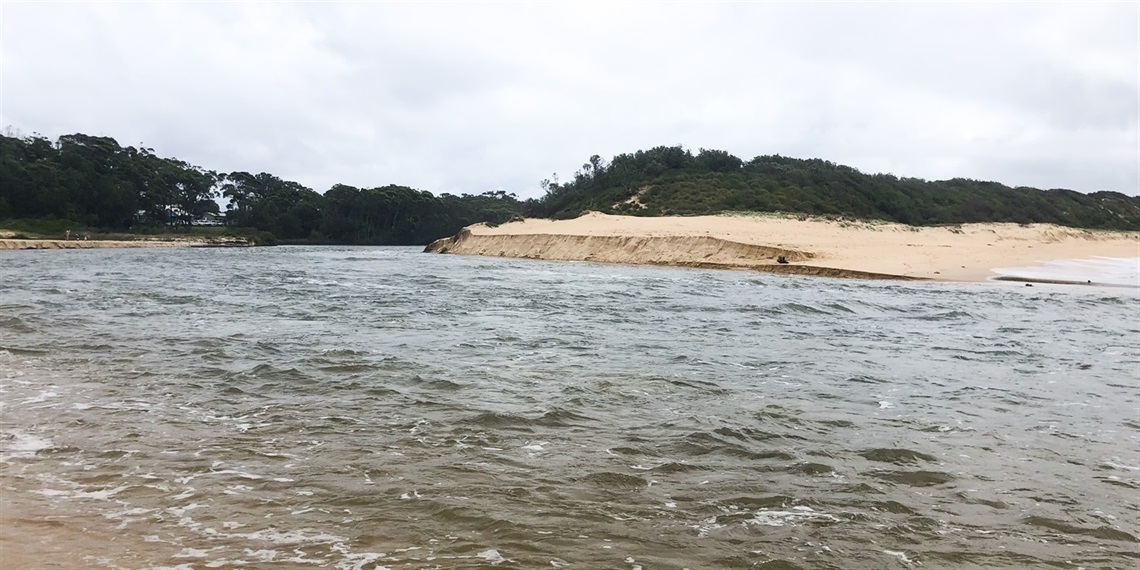Swan Lake Artificially Opened Illegally
Published on 20 July 2022

Council operates an Entrance Management Policy for Swan Lake, and other coastal lakes in the Shoalhaven region, with licenses from various State Government Agencies.
This Policy allows Council to mechanically open Swan Lake to the ocean with an excavator to prevent flooding of low-lying properties surrounding the lake when the water level rises, typically following a large rainfall event, to a specific trigger level. The time an entrance remains open will depend on several factors including rainfall, size of the catchment, size of the lake, location of the entrance and sand movement along the coast.
Over recent days, attempts have been made by members of the public to artificially open Swan Lake.
NSW Department of Primary Industries - Fisheries have been alerted and will be enacting their compliance functions. Council Rangers have also been in the area carrying out investigations as the artificial opening of the lake is an illegal activity.
Opening an Intermittently Closed and Open Lakes and Lagoons (ICOLLs) before the water level is high enough results in an ineffective opening, which can close rapidly. It also allows more marine sand to enter the lake entrance, creating larger sand bars and future blockages.
In some cases, artificially opening lakes has caused fish kills with the rapid lowering of water levels stirring up mud and plant matter, causing oxygen levels to drop and fish to suffocate.
Unauthorised openings are prohibited and can carry a maximum fine of up to $220,000 per offence.
Shoalhaven City Council Manager of Environment Services, Dr Michael Roberts said, “Artificial openings of Swan Lake in the past have led to the creation of a 30-metre channel in the wrong location. This has resulted in significant amounts of erosion, and other adverse environmental impacts on Swan Lake, such as low oxygen levels, and associated potential fish kills.”
“If Swan Lake or any other ICOLL is not opened in accordance with the Entrance Management Policy (right trigger level/lake height and location), a significant swimming hazard is likely to eventuate posing an intensified risk level to members of the public,” Dr Roberts stated.
Ongoing interference can result in impacts on the environment and the community:
- Changes in the ecology of the lake, resulting in loss of seagrass and saltmarsh, mangrove colonisation and decline in recreational species
- Allowing tides and storm surges in, exposing low lying areas to ocean flooding
- Lower the water levels exposing additional foreshore, leading to erosion issues
- Creating tidal currents that can cause floating fish larvae to settle in inhospitable areas of the estuary